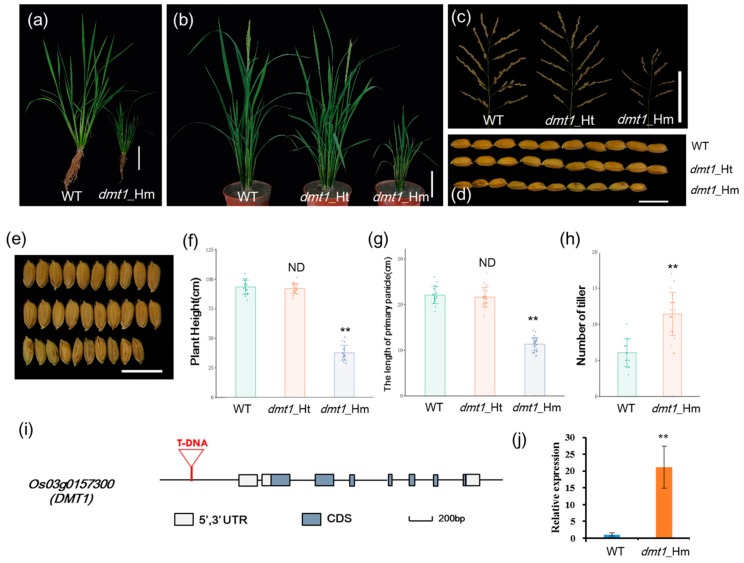Figure 1.
Characterization of the rice dwarf and multi-tillering1 (dmt1) mutant plants. (a) dmt1 homozygous mutant exhibited a dwarf phenotype in the tillering stage. Scale bar: 10 cm. (b) dmt1 homozygous mutants exhibited dwarf and multi-tillering phenotypes compared with those of the wild type (WT) and heterozygous mutants during the reproductive stage. Scale bar: 10 cm. (c) The phenotype of panicle branching in the WT (left), dmt1 heterozygous mutant (middle), and dmt1 homozygous mutant (right). Scale bar: 10 cm. (d,e) Seed length and width in the WT (upper), dmt1 heterozygous mutant (middle), and dmt1 homozygous mutant (bottom). Scale bar: 1 cm. (f,g) Statistical analysis of plant height (f) and primary panicle length (g) in the WT, dmt1 heterozygous mutant, and dmt1 homozygous mutant. Values represented by means ± SE. ∗∗ p < 0.01, Student’s t-test, n = 30; (h) Statistical analysis of the number of tillers in the WT and dmt1 homozygous mutant. Values are expressed is represented by means ± SE. ∗∗ p < 0.01, Student’s t-test; n = 30. (i) Schematic diagram of DMT1. DMT1 consisted of eight exons and seven introns. T-DNA inserted into the promoter region. Boxes and lines represent exons and introns, respectively. (j) DMT1 transcripts were detected in the dmt1 mutant and the WT using qRT-PCR. ACTIN1 was used for a control. ** p < 0.01, Student’s t-test.

